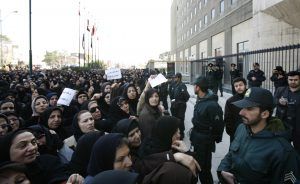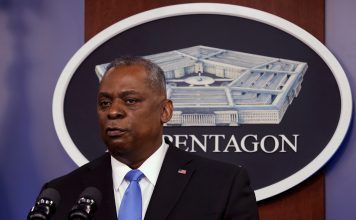By Kayhan Life Staff
Iran commemorates Teachers’ Day on May 2, an opportunity for students, parents, and communities to show appreciation for teachers’ significant role in shaping the future through education.
The Iran Open Data (IOD) report released on May 2 raised concerns about the salaries of Iranian teachers. The report highlighted that the minimum salary for teachers in Iran is only one-seventh — slightly over 14 percent — of what primary school teachers earn in Turkey.
The report said that in 2023, both Turkey and Iran were among the top 10 countries globally, with the highest inflation rates. However, the impact of this inflation on wages differed between the two countries.
Islamic Republic Recruits Basijis, Clerics As School Teachers
In Turkey, the wage figure increased proportionately to the inflation rate, meaning that minimum wages kept pace with the rising cost of living. However, in Iran, despite potential increases in minimum wages, the real value of wages decreased because of higher inflation rates or other economic factors.
In 2023, the minimum salary of Iranian teachers was 100 million rials, equivalent to approximately $234 a month (at the exchange rate of 427,000 rials to a U.S. dollar in May 2023). This figure is around $159 today, given the current average foreign exchange rate in the open market of approximately 630,000 rials to a U.S. dollar. Comparatively, in Turkey, the monthly salary of primary school teachers stands at about 40,000 Turkish liras, equivalent to approximately $1,223.
A report by the Organization for Economic Co-operation and Development (OECD) showed that the starting annual salaries of primary school teachers in various member countries range from $14,000 to $70,000. In contrast, the minimum annual salary of Iranian teachers is less than $2,000.
The annual minimum wage for Iranian teachers is estimated at the most at $1,908. It is calculated by multiplying the minimum monthly salary of 100 million rials by 12 months and assuming a stable exchange rate of 630,000 rials to a dollar.

Teachers’ unions in Iran have advocated consistently for union demands to be fulfilled, primarily focusing on increasing teachers’ wages, as highlighted in the IOP report. For over two decades, these unions have advocated for implementing the “Ranking Law,” which entails moving up the bands and a pay scale to enhance official teachers’ salaries.
The Coordination Council of Cultural Associations of Iran has expressed concerns regarding the government’s implementation of the Ranking Law in 2022. They argue that the law does not address the longstanding issues of low salaries and poor working conditions teachers face in Iran. Meanwhile, activists within teachers’ unions have reported being denied ratings under this law, exacerbating existing salary disparities.
The Iranian government has implemented ‘seasonal’ and ‘contract’ teaching schemes to circumvent the legal obligations to pay teachers their entitled salaries and benefits. This practice has raised significant concerns about the treatment of educators and the overall state of the Iranian educational system.
Iran faces a critical shortage of teachers, with estimates showing a deficit of approximately 400,000 educators. This shortage has far-reaching implications beyond just being a numerical figure; it directly impacts the quality of education that students receive across the country. The severity of this issue underscores the pressing need for immediate action to address the crisis.
The Iranian government has said that its inability to pay fair salaries or employ enough teachers is because of a “lack of sufficient resources.” However, critics argue that a closer examination of the budget allocations for various state institutions reveals a pattern of neglect towards the education sector, suggesting that the issue may be more than just because of a lack of resources.
For example, in the government’s 2023-24 budget bill, the fund allocated to the Islamic Revolutionary Guards Corps (IRGC) rose by 28 percent, reaching nearly $2.8 billion. Also, the funding for the Islamic Republic of Iran Broadcasting (IRIB) increased by 42 percent, reaching $176.3 million in the 2023-24 budget bill.
In the same fiscal year, the Ministry of Intelligence’s budget increased significantly by 52 percent, reaching $468.3 million. Simultaneously, the funding allocated to the country’s Prisons Organization also increased significantly by 55.5 percent, amounting to $217.1 million.
Several institutions that promote Islamic ideology experienced an increase in funding, including the Seminaries Service Center, which supports seminary students and covers their tuition fees, received a boost of $146.2 million. The Supreme Council of Qom Seminaries saw its budget rise by 60 percent to $73.1 million. The Ministry of Culture and Islamic Guidance received $131.7 million, while the Islamic Development Organization’s budget increased by 53 percent to $53.8 million.
The IOD report conducted a comparative analysis of seminary and education budgets, showing a significant trend over the past 13 years. The report highlighted that the growth rate of the seminary budget has been one and a half times higher than the increased funding allocated to teachers’ salaries and Ministry of Education employees during this period.
This disparity in budget allocation has led to a situation where the seminaries, which cater to a smaller population, receive a larger share of the budget, while the education sector, which serves a much larger population, is underfunded. Official statistics show that over 16 million people are covered by public education services in Iran. Also, as per official estimates, the number of clerics in the country ranges between 90,000 and 130,000 individuals.
Between 2012 and 2024, there was a significant disparity in the budget allocation for education and the four principal institutions associated with Qom Seminaries.
The IOD report highlighted that in the current 2024-25 budget bill, the funding for the “Supreme Council of Qom Seminaries,” a key religious institution, “Sisters Seminaries” (women’s religious seminaries), “Khorasan Seminaries,” and the “Seminaries Service Center,” amounted to $249 million.
This is a substantial increase compared to 2013, when the total budget for these four institutions was only $9.9 million, representing one-twenty-fifth of the current amount. Also, the funding for the education and development of provinces rose from $218.3 million in 2012 to $3.5 billion in 2024.
Iran Overhauls Educational System, Purges Academia in ‘Cultural Revolution’














